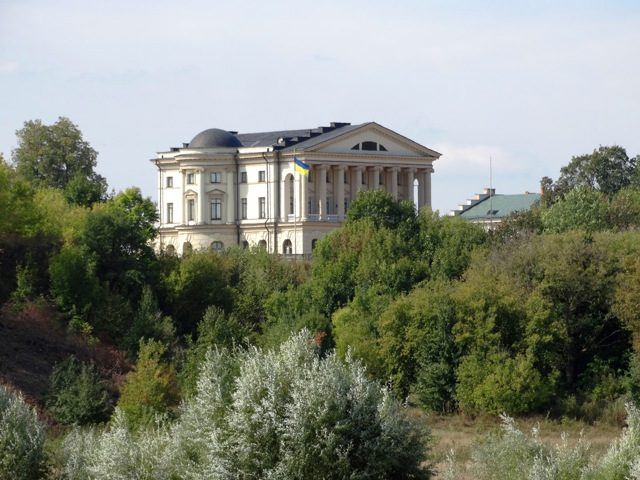Functional temporarily unavailable
General information about Baturyn
The border fortress Baturyn was founded in 1575 by the Polish king Stefan Bathory, named after him (according to another version, after the Cossack Batura, or from the word "batura" - tower, fortress). In written sources, the city was first mentioned in 1625, and already in 1669 it became the capital of the Hetman's Ukraine. Baturin was the residence of the hetmans D. Mnogogreshny, I. Samoilovich, and I. Mazepa, who came from here with his army to help Charles XII against the Russian army. For this, in 1708, by order of Peter I, Russian troops under the command of A. Menshikov destroyed the city to the ground and destroyed the entire 20,000 population (according to various estimates, from 6 to 11 thousand who died directly during the massacre). In 1750, the last Ukrainian ...
The border fortress Baturyn was founded in 1575 by the Polish king Stefan Bathory, named after him (according to another version, after the Cossack Batura, or from the word "batura" - tower, fortress). In written sources, the city was first mentioned in 1625, and already in 1669 it became the capital of the Hetman's Ukraine. Baturin was the residence of the hetmans D. Mnogogreshny, I. Samoilovich, and I. Mazepa, who came from here with his army to help Charles XII against the Russian army. For this, in 1708, by order of Peter I, Russian troops under the command of A. Menshikov destroyed the city to the ground and destroyed the entire 20,000 population (according to various estimates, from 6 to 11 thousand who died directly during the massacre). In 1750, the last Ukrainian hetman K. Razumovsky received permission to restore the hetman capital in Baturyn and in 1799-1803. built a new palace. Several more architectural and historical monuments have survived. Since 2005, at the initiative of the President of Ukraine V. Yushchenko, reconstruction has been carried out, a historical and architectural reserve "Hetman's Capital" has been created. In 2008, Baturin was awarded the status of a city. The creation of a military lyceum is planned. The tourist infrastructure is underdeveloped.
Прикордонна фортеця Батурин заснована в 1575 році польським королем Стефаном Баторієм, названа його ім'ям (за іншою версією, від козака Батури, або від слова "батура" - вежа, фортеця). В письмових джерелах місто вперше згадується в 1625 році, а вже з 1669 р. стає столицею Гетьманської України. Батурин був резиденцією гетьманів Д. Многогрішного, І. Самойловича, а також І. Мазепи, який виступив звідси зі своїм військом на допомогу Карлу XII проти російської армії. За це в 1708 році за наказом Петра I російські війська під командуванням О. Меншикова вщент зруйнували місто і знищили все 20-тисячне населення (за різними оцінками, від 6 до 11 тис. загиблих безпосередньо під час різанини). У 1750 році останній український гетьман К. Розумовський отримав дозвіл на відновлення геть ...
Прикордонна фортеця Батурин заснована в 1575 році польським королем Стефаном Баторієм, названа його ім'ям (за іншою версією, від козака Батури, або від слова "батура" - вежа, фортеця). В письмових джерелах місто вперше згадується в 1625 році, а вже з 1669 р. стає столицею Гетьманської України. Батурин був резиденцією гетьманів Д. Многогрішного, І. Самойловича, а також І. Мазепи, який виступив звідси зі своїм військом на допомогу Карлу XII проти російської армії. За це в 1708 році за наказом Петра I російські війська під командуванням О. Меншикова вщент зруйнували місто і знищили все 20-тисячне населення (за різними оцінками, від 6 до 11 тис. загиблих безпосередньо під час різанини). У 1750 році останній український гетьман К. Розумовський отримав дозвіл на відновлення гетьманської столиці в Батурині і в 1799-1803 рр. побудував новий палац. Збереглося ще кілька архітектурних та історичних пам'яток. З 2005 року з ініціативи президента України В. Ющенка ведеться реконструкція, створено історико-архітектурний заповідник "Гетьманська столиця". У 2008 році Батурину присвоєно статус міста. Планується створення військового ліцею. Туристична інфраструктура розвинена недостатньо.
Сплануй своє перебування у Baturyn
What to see and where to go in Baturyn
Tourist attractions and museums of Baturyn
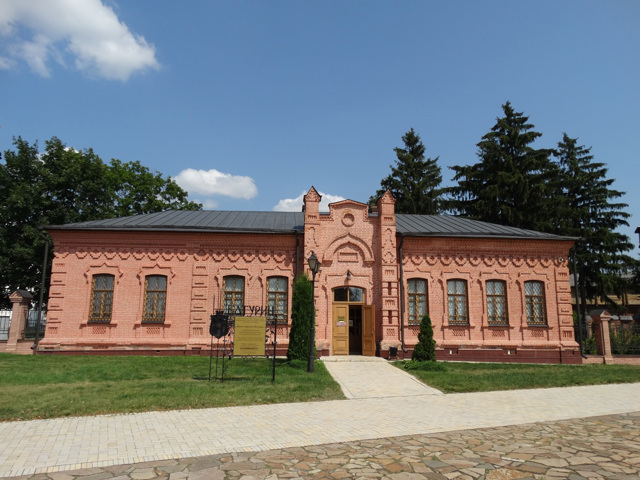
Baturyn Museum of Archeology
Museum / gallery
The Baturyn Archaeological Museum was opened in the reconstructed premises of the Resurrection Church and Parish School (1904). It is a part of the reserve "Hetman's capital". The exposition is developed in three halls according to the chronological-thematic principle. The Neolithic, Bronze and Iron Ages are represented by fragments of pottery and silicon products. Ancient Russian material: utensils, glass bracelets, ornaments made of non-ferrous metals, iron and bone products. The date of construction of the Polish fortifications is indicated by a silver thaler minted in Basel in 1622. Insurgent weapons tell about the liberation movement of the Ukrainian people: battle axes, pitchforks, etc. The hetman's period of Baturyn is characterized by Cossack derivatives and household items, copies of documents and maps, handicrafts, in particular original tiles with images of the coats of arms of Ukrainian hetmans Ivan Bryukhovetsky, Ivan Mazepa, Pylyp Orlyk. The relics of the heroic defense of the city of 1708 found during the excavations deserve special attention - body icons and crosses of the victims of the massacre, fragments of a cannon and a bell. The symbol of the tragedy was a burnt icon of the Mother of God with the Infant on a copper plate with traces of gilding by masters of the Kiev-Pechersk Lavra of the late XVII century, found by archaeologists in the grave of an elderly woman with a broken skull.
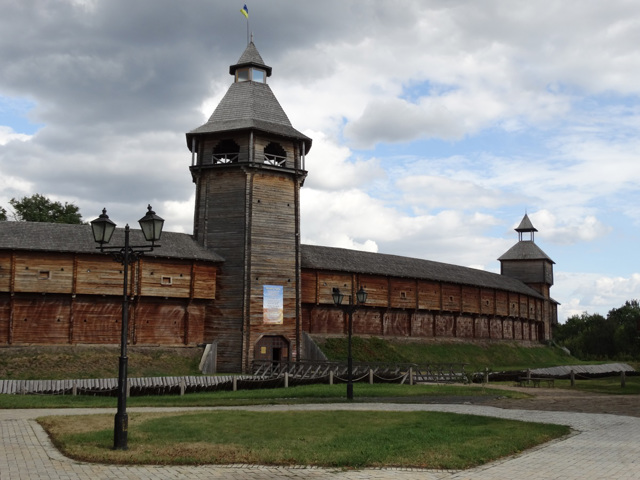
Citadel of Baturyn Fortress
Castle / fortress , Museum / gallery
The wooden Cossack fortress in Baturyn on the Seym River was reconstructed in 2009 on the same site where from 1669 to 1708 the fortified residence of three Ukrainian hetmans was located: Demyan Mnohohrishny, Ivan Samoilovich, Ivan Mazepa. The life and activity of Pylyp Orlyk and Kyrylo Rozumovsky are also connected with the hetman's capital in Baturyn (a monument "Hetmans. Prayer for Ukraine" has been erected).
Baturyn Fortress was founded in 1625 on the ancient Russian settlement by Polish magnate Alexander Pyasochynsky. In 1664, when Baturyn was already a hundredth Cossack town, the fortress could not be captured by the troops of Polish King Jan Casimir. Baturyn fortress consisted of external urban earthen fortifications with a fence and a citadel (castle), where the residence of the hetmans was located. There was a stone hetman's house and a wooden Church of the Resurrection, an entrance gate and three towers.
In 1708, all the buildings of the Baturyn Fortress were completely destroyed during a punitive operation by Russian troops under the command of Alexander Menshikov on the orders of Tsar Peter I of Moscow in revenge for Hetman Ivan Mazepa for siding with Swedish King Charles II during the Moscow-Swedish War. In memory of the Baturyn tragedy, during which almost the entire population of the city was destroyed (5-6.5 thousand soldiers, 6-7.5 thousand civilians), in 2004 a memorial was erected on the site of the north-eastern tower of the citadel. cross.
By 2009, the reconstruction of three defensive towers, wooden fortress walls, a stone hetman's house, a treasury and the castle Resurrection Church, which were included in the exposition "Citadel of Baturyn Fortress" of the Hetmanate History Department of the National Historical and Cultural Reserve, was completed Hetman's capital ". An exhibition of three-dimensional figures "Light Hetmans. Life for Ukraine" has been opened in the Hetman's house. The best panorama of the Sejm valley opens from the observation deck of the gate tower.

House of Judge General Kochubey
Museum / gallery
The house-museum of the General Judge of the Zaporizhia Army Vasyl Kochubey in Baturyn is a rare example of civil architecture of the Ukrainian Baroque era. This is the only building that has survived since the Baturyn Fortress after the destruction of the Hetman's capital by Moscow troops in November 1708.
The one-storey brick building of the General Court was built in the second half of the 17th century during the time of Hetman Demyan Mnohohrishny. He performed both administrative and housing functions. From 1700 it was inhabited by Judge General Vasyl Kochubey and her family. His 16-year-old daughter Motrona (Motrya) was in love with her godfather, 58-year-old Hetman Ivan Mazepa, but the father was adamantly against their marriage. Kochubey and his associate Ivan Iskra tried to settle accounts with Mazepa by informing Tsar Peter I of Moscow about the hetman's secret negotiations with King Charles XII of Sweden. The tsarist government extradited the informers to Mazepa, and they were sentenced to death. After the execution of her father, Motrya went to the monastery. The monument, the Alley of Love and 500-year-old oaks in the manor park (there are the remains of the ramparts of the Baturyn fortress) remind of this dramatic story.
The house of Judge Kochubey has housed the Museum of History and Local Lore since 1975, which in 2006 became part of the National Historical and Cultural Reserve "Hetman's Capital". The exposition acquaints with the history of the house and the Kochubey family, and also deeply reveals the theme of Motria’s and Mazepa's love. The interiors of the investigation and pre-trial detention rooms with an exposition of instruments of torture are recreated in the basements. Part of the exhibition is dedicated to the beekeeper, inventor of the hive Peter Prokopovich, who lived in Baturyn.
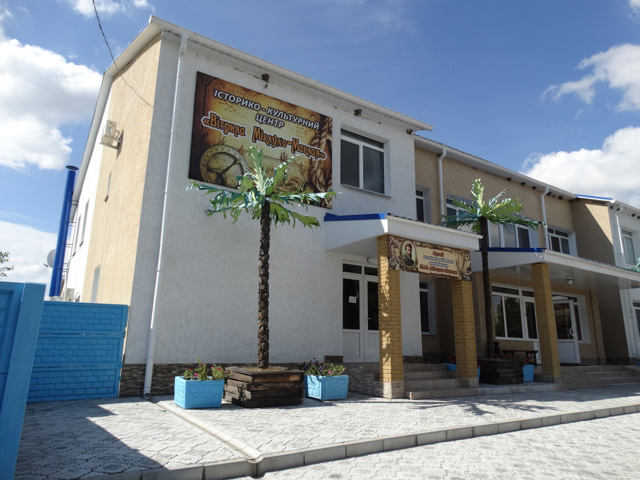
Maclay Sails Museum
Museum / gallery
The Maclay Sails Historical and Cultural Center was opened in Baturyn in 2014 to mark the 168th anniversary of the birth of the outstanding traveling scientist Nicholas Miklouho-Maclay. This is the third museum created by the descendants of the scientist Alexander and Nadezhda Miklouho-Maclay. Nicholas Miklouho-Maclay himself was not directly related to Baturyn, but was a descendant of the Zaporozhian Cossacks, and his patron was Count Alexei Tolstoy, great-grandson of Hetman Kirill Razumovsky, who spent his best years in Baturyn. In the second half of the 19th century, Miklouho-Maclay studied the indigenous peoples of Southeast Asia, Australia and Oceania, and wrote many works on zoology, zoogeography, and physical geography. The museum presents a gallery of portraits of Maclay and members of his family, family coat of arms, materials of ethnographic expeditions, models of ships, statuettes of island natives, maps and more. In one of the rooms there is a corner where you can try on costumes of the XIX century and take pictures at the helm. The Maclay Sail Museum is part of the eponymous hotel and restaurant complex.
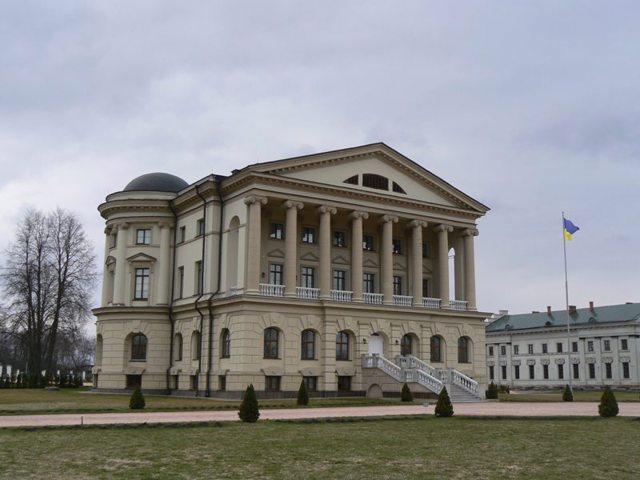
Palace of Hetman Kirill Rozumovsky
Palace / manor , Museum / gallery
The ceremonial residence of the last Hetman of Ukraine Kyrylo Rozumovsky effectively stands on a cliff above the river Seym in the town of Baturyn, which served as the hetman's capital in the XVII-XVIII centuries. It is an outstanding architectural monument of the Classicist era of national importance, the only surviving Hetman’s palace and the only architectural structure in Ukraine designed by the outstanding architect Charles Cameron. It is a part of the National Historical and Cultural Reserve "Hetman's Capital".
Construction lasted from 1799 to 1803, after the hetmanate, along with the remnants of Ukrainian independence, was abolished by the government of the Russian Empire. In fact, Rozumovsky did not have time to live in his new palace, as he died in the year of completion. His descendants did not use the palace for its intended purpose, it was badly damaged by fire, was in a dilapidated condition for a long time, and was partially restored several times. The revival began at the initiative of President Victor Yushchenko at the expense of patrons. On August 22, 2009, the restored palace with the exposition of the Museum of the Hetmanate was solemnly opened for visitors.
On the ground floor you can get acquainted with the historical past of Hetman Baturyn through the prism of state activity of Kyrylo Rozumovsky, as well as with the history of construction and restoration of the palace and park ensemble. The interiors of the second floor have been restored in analogy to the surviving works of Charles Cameron and are richly decorated with paintings of ancient Greek mythology, floral ornaments and hetman's jewels. The halls exhibit furniture and interior items, paintings, icons of the XVIII-XIX centuries. The Hetman's Hall is especially magnificent, where the "Stone" table with a marble board inlaid with semi-precious Ural stones is displayed. Among the items that belonged personally to Kyrylo Rozumovsky and his family, you can see the hetman's company lab, the seal of the Rozumovsky cloth factory, the hetman's station wagon and fragments of Rozumovsky's tombstone.
Around the palace is a regular French park, restored according to the scheme of the master plan of the palace and park ensemble. The original palace wings have not survived, their reconstruction is frozen.
Reviews Baturyn
Geographical information about Baturyn
| {{itemKey}} | {{itemValue}} |
|---|---|
| Region |
Chernihiv |


